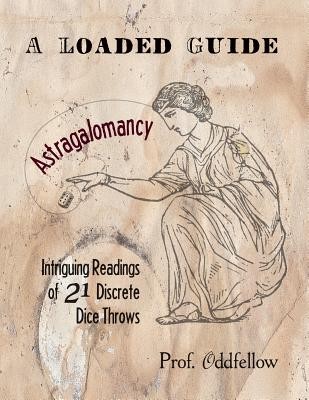
- We will send in 10–14 business days.
- Author: Craig Conley
- Publisher: CreateSpace Independent Publishing Platform
- Year: 2012
- Pages: 36
- ISBN-10: 1478168153
- ISBN-13: 9781478168157
- Format: 21.6 x 27.9 x 0.2 cm, softcover
- Language: English
- SAVE -10% with code: EXTRA
Reviews
Description
There is perhaps no better way to conjure up the spirit of great antiquity than to roll dice. The very ancient game of throwing knucklebones dates back to the Trojan War (ca. 1194-1184 BCE), if we are to take Sophocles' word. The original knucklebone was technically a bone in a sheep's ankle, the astragalus, hence divination by astragalomancy.
The great Greek philosopher Plato traced dice even farther back, to the ibis-headed Egyptian god Thoth, inventor of magic and writing and science, divine arbitrator, judge of the dead, and maintainer of the universe. Plato himself played dice not only with cubes but also tetrahedrons, octahedrons, dodecahedrons, and icosahedrons-the famous "Platonic solids" of geometry. Plato said, "God geometrizes," and that's a key to why dice have always been associated with divination-the geometric solids, as building blocks of the universe, embody truths on higher planes.
Over the centuries, several rules have been associated with throwing dice for divination. "However, it is entirely a matter of personal choice whether these are followed or ignored. Many of these rules are arbitrary and were probably developed to add mystery and significance to divination by dice. Do not be afraid to develop your own guidelines, nor to be completely spontaneous, using the dice in different ways according to your instincts at the time. Trusting your instincts is the best way to get a good reading."
- Author: Craig Conley
- Publisher: CreateSpace Independent Publishing Platform
- Year: 2012
- Pages: 36
- ISBN-10: 1478168153
- ISBN-13: 9781478168157
- Format: 21.6 x 27.9 x 0.2 cm, softcover
- Language: English English
There is perhaps no better way to conjure up the spirit of great antiquity than to roll dice. The very ancient game of throwing knucklebones dates back to the Trojan War (ca. 1194-1184 BCE), if we are to take Sophocles' word. The original knucklebone was technically a bone in a sheep's ankle, the astragalus, hence divination by astragalomancy.
The great Greek philosopher Plato traced dice even farther back, to the ibis-headed Egyptian god Thoth, inventor of magic and writing and science, divine arbitrator, judge of the dead, and maintainer of the universe. Plato himself played dice not only with cubes but also tetrahedrons, octahedrons, dodecahedrons, and icosahedrons-the famous "Platonic solids" of geometry. Plato said, "God geometrizes," and that's a key to why dice have always been associated with divination-the geometric solids, as building blocks of the universe, embody truths on higher planes.
Over the centuries, several rules have been associated with throwing dice for divination. "However, it is entirely a matter of personal choice whether these are followed or ignored. Many of these rules are arbitrary and were probably developed to add mystery and significance to divination by dice. Do not be afraid to develop your own guidelines, nor to be completely spontaneous, using the dice in different ways according to your instincts at the time. Trusting your instincts is the best way to get a good reading."


Reviews